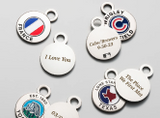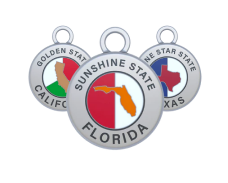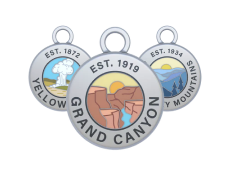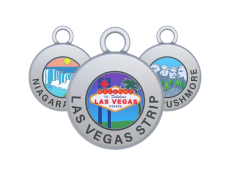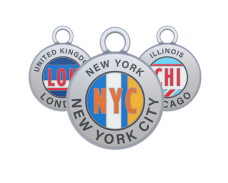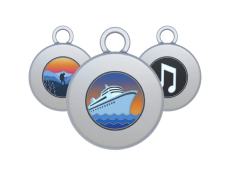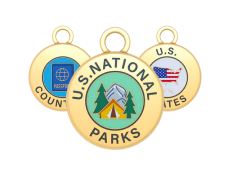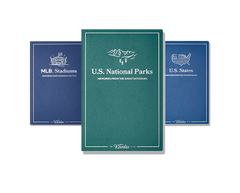
Key Takeaways:
- Diverse Experiences For Every Visitor: Indiana Dunes National Park offers a range of activities, from relaxing on sandy beaches to exploring oak-studded trails, making it ideal for creating lasting family memories.
- Seasonal Highlights To Enjoy Year-Round: Each season brings something unique, from vibrant spring bird migrations to adventurous winter snowshoeing through the park’s scenic landscapes.
- Fun for Families Of All Ages: The park features engaging options like the Junior Ranger program and iconic challenges, ensuring that kids and adults can enjoy hands-on learning and outdoor exploration together.
If you’re wondering what to do at Indiana Dunes National Park, the answer lies in its blend of shoreline beauty, diverse ecosystems, and accessible adventures. Stretching along Lake Michigan, the park offers sandy beaches for summer swims, forest trails for year-round hikes, and wetlands teeming with wildlife. Families can enjoy kid-friendly nature programs, while birdwatchers and photographers find endless inspiration. The park’s mix of relaxation, recreation, and natural wonder makes it a destination for every kind of traveler.
At The Wander Club, we transform journeys into lasting keepsakes. Focusing on craftsmanship, personalization, and meaningful design, each piece reflects the places you’ve explored and cherished moments. Built for travelers who value connection and story, our creations ensure your adventures live on in something you can hold, share, and pass down. Every item is made to honor the spirit of exploration and the joy of discovery.
In this blog, we’ll break down the top things to do at Indiana Dunes National Park, from its sandy beaches and scenic hiking trails to wildlife-rich wetlands and family-friendly programs. We’ll also cover seasonal highlights, local nature experiences, and tips for making the most of your visit.
Indiana Dunes Basics: Location And Access
You’re closer to the wild shoreline than you think. Indiana Dunes National Park stretches 15 miles of Lake Michigan’s southern edge, about an hour from downtown Chicago and two and a half hours from Indianapolis. It’s a patchwork of beaches, wetlands, oak savannas, and towering dunes stitched together by scenic drives and trailheads, with Indiana Dunes State Park tucked right in the middle like a bonus level you don’t want to skip.
Where You’re Headed
- Visitor Hubs: Indiana Dunes Visitor Center (Porter) and Paul H. Douglas Center for Environmental Education (Gary) are your go-tos for maps, trail conditions, and ranger tips.
- Key Beaches: West Beach (wide sand, lifeguards in summer), Porter Beach (easy access), and Kemil/Indiana Dunes State Park Beach (big views, rolling dunes).
- Trail Gateways: Cowles Bog (botany and big sky), Mount Baldy (guided access), and Dune Succession Trail at West Beach (stairs, sweat, pay-off panoramas).
The weather here has moods, and you’ll want to sync with them. Lake Michigan is the boss, with cooling summer breezes, sudden storms, and winter that can turn the landscape into an ice sculpture garden.
Passes And Fees
The national park requires an entrance fee or America the Beautiful Pass for many lots and beach areas. The neighboring state park has its gate fee. Check current rates before you roll.
Parking And Transit
Lots fill fast on sunny weekends; arrive early or aim for late afternoon. The South Shore Line train has stops at Beverly Shores, Dune Park, and Miller, handy for car-free beach days. Local rideshares operate near major trailheads, but service can be spotty at sunset.
Road Notes
US-12 and US-20 run east to west along the park, with short spurs to beaches and trailheads. Expect train crossings and summer construction that can slow things down; keep alternate routes in your back pocket.
A Few Smart Moves Go A Long Way
- Bring a paper map or download offline maps; cell service drops in pockets between dune ridges.
- Sandals for the beach, sturdy trail shoes, and a small towel to de-sand before you drive.
- Respect closures around sensitive dune areas and nesting sites; the landscape here is constantly reshaping.
- Dial in these basics, and the rest of your day writes itself: a sunrise climb, a lakeshore breeze, and the quiet you can feel in your bones.
Choose The Perfect Season For Your Adventure
You’ll feel the Indiana Dunes differently in every season, and that’s the magic. Each stretch of shoreline, each swath of prairie, each sandy ridge tells a new story depending on the month you visit. Choose with intention, and the park will meet you halfway.
Spring (March–May)
This is your reset button. Wildflowers lace the forest floor, bird migrations kick into gear, and cooler temps make longer hikes feel effortless. Aim for April and May if you want a front-row seat to trillium blooms and warblers threading the treetops. Trails like Cowles Bog and Heron Rookery come alive quietly, perfect for unhurried wandering and photography without the crowds.
Summer (June–August)
This is prime beach season. Lake Michigan warms up, lifeguarded beaches buzz, and sunset swims become a ritual. You’ll trade solitude for energy, but you’ll gain shimmering mornings on the shoreline, soft-serve by the boardwalk, and starry nights with waves as your soundtrack. Start beach days early or late to beat the midday rush, and tuck into inland trails when the sand gets hot.
Fall (September–November)
The dunes turn into a painter’s palette. Maples flare red, oaks go burnished gold, and the air smells like campfire and leaves. September gives you lingering warmth without summer crowds; October is peak color in the forests and along ridge hikes like Mt. Baldy and Dune Succession; pack layers and plan for golden-hour walks when the light hits the grasses just right.
Winter (December–February)
Stark, quiet, and cinematic. The lake forms shelf ice, and the dunes cast long, blue shadows. You’ll find cross-country skiing on groomed paths, crisp air on the Paul H. Douglas Trail, and viewpoints that feel entirely new under snow. Dress for the wind, check conditions before you go, and savor the hush; this park is at its most contemplative.
Tackle The Iconic 3 Dune Challenge
The 3 Dune Challenge at Indiana Dunes State Park is short, steep, and surprisingly addictive, a 1.5-mile loop that strings together three towering dunes: Mount Jackson, Mount Holden, and Mount Tom. You’ll climb, crest, and descend on soft, shifting ground that turns every step into a mini battle against gravity. It’s a test, sure, but it’s also a time capsule, sand shaped by centuries, forests whispering with birdsong, and lake breezes carrying the scent of beachgrass.
Here’s how to make it yours:
- Start early. Sunrise light paints the sand gold and keeps the crowds light. You’ll also beat the midday heat, which makes those sandy ascents feel twice as long.
- Wear trail shoes with real grip. Sand works against you on the climbs and loves to swallow flimsy soles.
- Bring water and keep your hands free. You’ll want balance on the ridge walks, where the lake opens up on one side and a rolling sea of trees stretches on the other.
- Pace the first dune. Mount Jackson hits fast, and it’s easy to burn out in the first 10 minutes.
- Stop at each summit. Take a breath. Log the moment. Watch hawks circle and boats ghost across the horizon. These are the snapshots that stick.
Pro Tips For The Route
- Trailhead: Begin near the Nature Center; look for the marked “3 Dune Challenge” signs.
- Direction: Go counterclockwise for a steeper first climb and more forgiving finishes, or clockwise if you want a steadier warm-up before the big push.
- Conditions: After rain, sand compacts, making climbs easier. On windy days, expect shifting ridges and fresh ripples underfoot.
- Family-friendly Strategy: Break it into mini goals; “to the next ridge,” “to the shaded section,” and celebrate each summit.
Bring The Kids For Junior Ranger Activities
Suppose your little explorers have endless questions and even more energy. Indiana Dunes National Park channels that curiosity into something they’ll proudly take home: a Junior Ranger badge.
Stop by the Visitor Center to grab a free Junior Ranger booklet, then set off on a choose-your-own-adventure through beaches, prairies, and oak savannas. Each activity nudges kids to look closer, counting animal tracks in the sand, identifying dune plants, listening for birds, and sketching the landscape like budding naturalists.
The beauty of the program is its flexibility. You can tackle a few pages between swim sessions at West Beach or weave it into a full day of hiking along the Dune Ridge Trail and exploring the unique microclimates around Mt. Baldy. Rangers and volunteers are enthusiastic co-conspirators here, happy to answer questions, share fun facts about shifting dunes, and stamp booklets when missions are complete.
A few tips to make it rewarding:
- Pick up the booklet early, so every trail becomes a clue hunt.
- Bring a small pencil case, a pair of kid-friendly binoculars, and a magnifying loupe, simple tools that transform a walk into a field expedition.
- Mix in short, varied stops: a boardwalk overlook, a shady picnic, then a shoreline scavenger list. Momentum matters.
- Ask about ranger-led programs and Junior Ranger Days; themed activities often include creature-features, hands-on geology demos, and beach ecology walks.
When the final boxes are checked, head back to the Visitor Center for the oath ceremony. It’s short, sweet, and surprisingly moving. Kids promise to protect parks and share what they’ve learned, then walk out beaming with a badge and a story they can’t wait to tell.
Winter Fun: Snowshoeing, Sledding, & Cross-Country Skiing
The park changes character when the wind off Lake Michigan sharpens and the dunes put on their quiet white armor. You trade sandals for wool socks, footprints for ski tracks, and the soundtrack becomes the soft puff of breath inside a scarf and the hush of snow underfoot. It’s the kind of seasonal switch that turns familiar trails into something new, same map, different story.
Snowshoeing
After a fresh snowfall, hit the wooded loops near Glenwood Dunes or Tolleston Dunes. Snowshoes make the rolling terrain feel surprisingly approachable, even if you’re new to winter hiking. Keep your pace easy, watch for deer prints zigzagging between trees, and pull off your gloves just long enough to snap that “frosted branches against cobalt sky” photo you’ll revisit in July.
Sledding
The big bowl of laughter sits at West Beach’s designated sledding spots and the slope at Diana Dunes. These hills are steep enough to thrill, gentle enough for kids, and long enough to coax “one more run” out of you. Bring a sturdy sled, check conditions, and aim for mid-morning when the light breaks through and sparkles the surface like a field of tiny mirrors.
Cross-country Skiing
Groomed routes are limited, but the area’s broad corridors, such as the Glenwood Dunes Trail System, deliver a smooth glide after heavier snows. Classic skiers will love the gradual elevation changes; skate skiers will find the best conditions after locals lay tracks. Pack a thermos and throttle back your pace on the long straights. The reward is that steady, meditative rhythm that shuts out everything but your breath and the whisper of your skis.
Final Thoughts
You came for the beaches, the trails, and the wide-open sky that feels like a promise. You stayed for the hush between waves, the crunch of sand underfoot, and the dunes turning every step into a story. Indiana Dunes makes simple moments feel like keepsakes: sunrise in pastel, laughter echoing off boardwalks, a piney breeze long after you’ve left the shore.
At The Wander Club, we help you hold onto that feeling. With Tokens for National Parks and states, you can mark this trip with the care it deserves. Personalize a year, add initials, clip it to your keys, and let it be a quiet reminder that you’re the kind of traveler who chases meaning.
So pack the sand out of your shoes, tuck a new Token into your collection, and keep the dunes close. You’ll return, maybe in a different season, maybe with a new company, but the story you’re writing is already worth commemorating.
Read also:
- 7 Best States to Visit in Winter for Every Type of Adventurer
- 6 Best National Parks to Visit in February
- 15 Interesting NFL Facts You Probably Didn't Know
Frequently Asked Questions About What To Do At Indiana Dunes National Park
What should you not miss at Indiana Dunes National Park?
Make time for a sunrise at Kemil Beach, a hike along the 3 Dune Challenge at Indiana Dunes State Park, birding at Great Marsh, and a peaceful stroll on Cowles Bog Trail. For families, West Beach offers lifeguards in season, a boardwalk, and plenty of sand for castle-building. Cap it off with a lakeside picnic at Portage Lakefront and Riverwalk as the sun dips over Lake Michigan.
When is the best time to visit?
Late spring through early fall offer prime beach days, wildflowers, and active wildlife. Summer means warmer water and ranger-led programs, while autumn brings blazing dune-side foliage and fewer crowds. Winter is magical if you’re into snowshoeing and dramatic shelf ice views, just check conditions and stay off the ice.
Are the beaches good for families?
Yes. Thanks to amenities, lifeguards in season, and easy access, West Beach and Lake View are great picks for families. Bring shade, snacks, and water; minimal natural cover on the sand. Early mornings and weekdays help you beat crowds and secure parking.
What are the best trails for beginners?
Try the Dune Succession Trail (West Beach) for boardwalk views, the Heron Rookery in spring for wildflowers, and the Little Calumet River Trail for a shady, gentle stroll with historic farmsteads. If you’re up for a challenge, the 3 Dune Challenge packs a short, sandy punch and unforgettable vistas.
Do you need a reservation or a pass?
Most areas are open without reservations, but you’ll need a National Park entrance pass or day fee for certain parking areas. Indiana Dunes State Park has a separate entrance fee. Always check the National Park Service site for current rates, seasonal closures, and beach safety updates.
Can you swim in Lake Michigan?
When conditions allow, swim near lifeguarded beaches in season, heed flag warnings, and be mindful of rip currents. The lake can be brisk, even in summer, so pack layers and a dry change of clothes for kids.
